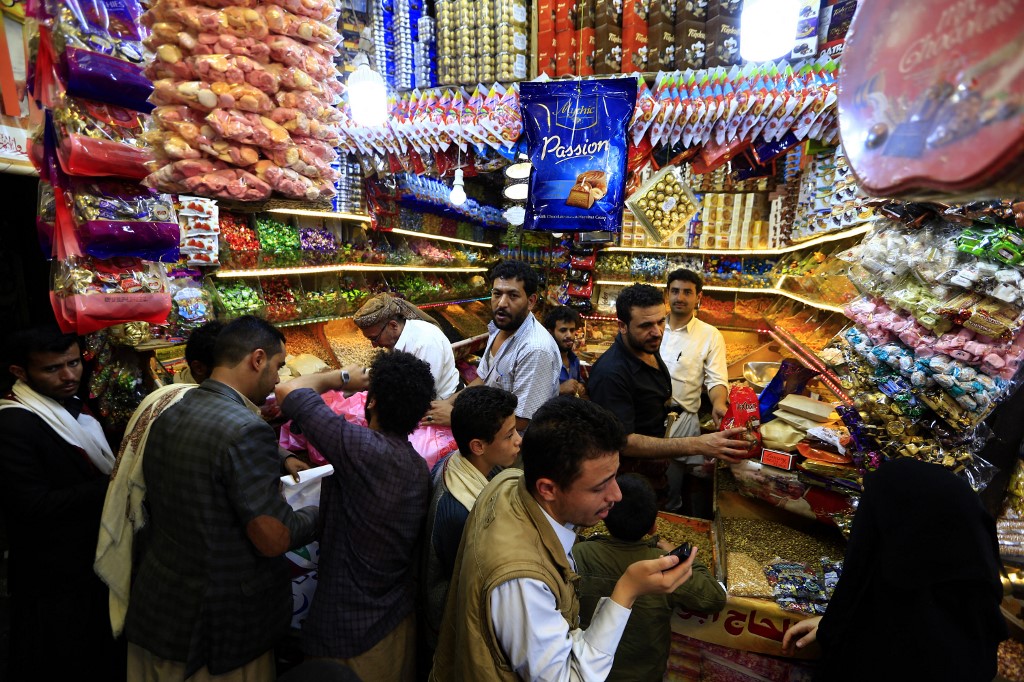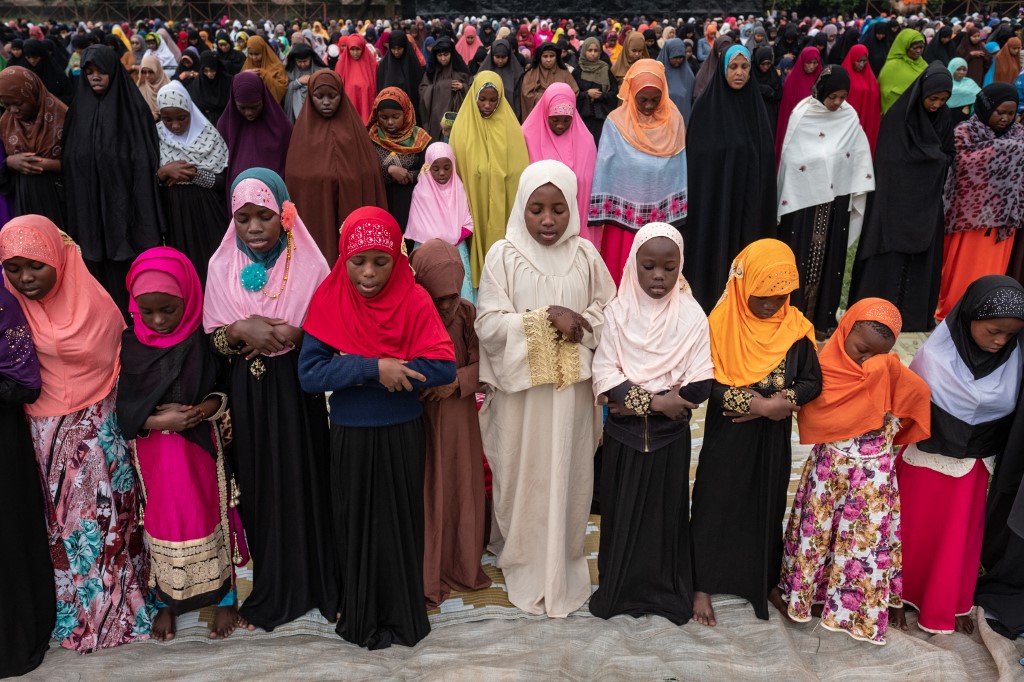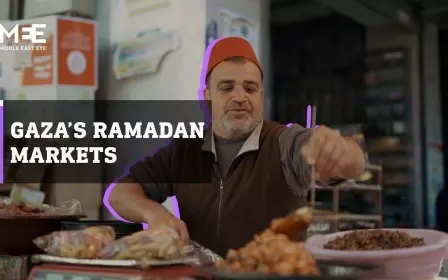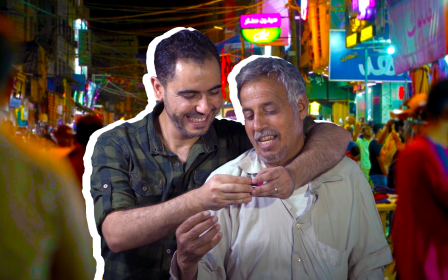When is Eid al-Fitr 2022? Here's everything you need to know about the celebration

As Ramadan draws to a close, Muslims around the world will spend the last few days of the month not only engaged in extra prayers and acts of worship, but preparing for Eid al-Fitr.
In the run-up to the festival, people will spend time cleaning their homes, baking sweet treats, preparing their Eid clothes and making plans to mark the occasion.
The celebration marks the end of the holiest month in the Islamic calendar, and is a joyous occasion for worshippers worldwide.
Muslims all over the world eagerly anticipate Eid al-Fitr, which means “the festival of breaking the fast”, because it comes after a month of fasting between dawn and sunset.
Here, Middle East Eye answers key questions about the occasion.
When is Eid 2022?
This year, Muslims will be donning their finest clothes and feasting on all of their favourite foods on either 1 or 2 May.
Depending on the sighting of the new moon, the date of Eid changes every year, as the Islamic lunar calendar is 11 to 12 days shorter than the solar calendar.
Eid also signals the first day of Shawwal, a new month in the Islamic calendar.
Officials and enthusiasts in Muslim majority countries spend the last nights of Ramadan observing the evening sky in an attempt to sight the new moon and announce the beginning of Eid.
Some countries may celebrate Eid on different days depending on the sighting of the new moon in their country.
Is Eid a public holiday?
Eid is a three-day public holiday in many Middle Eastern countries, such as Egypt, Saudi Arabia and the United Arab Emirates, as well as places beyond the Middle East, like Indonesia, Pakistan, Malaysia, Afghanistan and Malawi, among others.
Some countries in the Middle East go as far as giving up to a week off for citizens to mark the celebration.
Most shops, businesses and organisations may be closed or have altered opening times during the celebration to allow families to celebrate with their loved ones.
Despite efforts to make the day so, Eid is not a public holiday in the UK and the US. However, in some areas where there is a high population of Muslims, some businesses may choose to close or open later in the day.
Some Muslims may request to take the day off in order to spend it with their close friends and family.
What are some Eid traditions?
Every country and every family celebrates Eid differently, but there are some key festivities that are common.
Eid is meant to be a time of celebration, and of spending quality time with family and friends. Typically, Muslims will wear new clothes, either traditional dress or the best clothes that they own.
Homes are decorated elaborately and intricately to welcome the occasion.
People will visit others and spend time with family and friends throughout the day, often exchanging gifts.
One key tradition is for adults to give younger members of the family an “eddeya” or sum of money as a present in an envelope. Children will excitedly tear these envelopes open to spend their money on their Eid festivities.
It is also traditional to visit the sick, give to charity and pay respects to those who died and collect presents for those who have lost loved ones, especially orphans.
What do people eat during Eid?
After a month of fasting every day, it’s no surprise that Eid largely centres around food. The most decadent and lavish spreads are typically on offer.
One quintessential treat is kahk, a sugar cookie with a shortbread-like texture that can have many different fillings, such as date paste, mixed nuts, agameya (ghee, honey, sesame seeds) and Turkish delight, dusted with icing sugar. It can also be left plain with no filling.
Baking kahk is a key social activity in the Middle East, as families gather the night before Eid to cook and decorate, while bakeries are inundated with orders. In Egypt, kahk is so beloved that people have renamed the festival Eid al-kahk, meaning “celebration of kahk”.
Another favourite is qatayef, a fluffy golden brown pancake stuffed with sweet cream and nuts and doused in syrup.
Finally there is kunafa, the hallmark dessert of the Middle East, which is eaten copiously. Those more adventurous experiment with this sweet and syrupy dessert, adding different toppings including fruit and nuts to chocolate and cream.
Usually, families will spend Eid visiting other relatives and friends, and taking gifts and food over. However, with Covid-19 restrictions still in place, many people will spend Eid alone or with immediate family.
Why do Muslims give to charity, and how much do they give?
One of the key elements of Eid is Zakat al fitr, meaning “charity of breaking the fast", which must be paid before the end of Ramadan or Eid prayers.
This form of charity is intended so that the less fortunate can also enjoy Eid. It is obligatory upon Muslims, and stems from one of the five pillars of Islam, Zakat, which requires Muslims to give charity to help their communities and to strengthen their spiritual relationship with God.
Zakat al-fitr is a one-off payment, usually in the form of food or its monetary equivalent to the value of about £7 ($9) which allows the less fortunate to celebrate Eid.
The donation is intended to absolve the donor from any shortcomings they committed during the holy month and act as a form of thanks to God for allowing observance of the fast.
All Muslims must pay this amount, regardless of age or gender, so long as they possess enough to feed themselves. The head of the family will pay on behalf of any children or dependants.
Why are there two Eids? What’s the difference?
Eid al-Fitr, as explained above, comes at the end of Ramadan and celebrates the breaking of the fast.
Eid al-Adha, which means "festival of the sacrifice", is approximately two months after Eid al-Fitr and is culturally considered a bigger event. It coincides with the Islamic pilgrimage to Mecca in Saudi Arabia, known as Hajj, which every Muslim is expected to undergo at least once during their lifetime, if they are physically and financially able.
Middle East Eye propose une couverture et une analyse indépendantes et incomparables du Moyen-Orient, de l’Afrique du Nord et d’autres régions du monde. Pour en savoir plus sur la reprise de ce contenu et les frais qui s’appliquent, veuillez remplir ce formulaire [en anglais]. Pour en savoir plus sur MEE, cliquez ici [en anglais].








